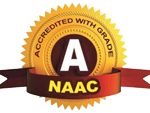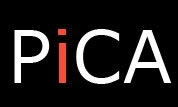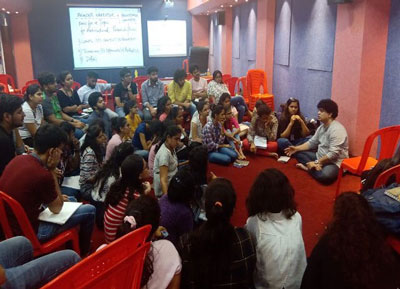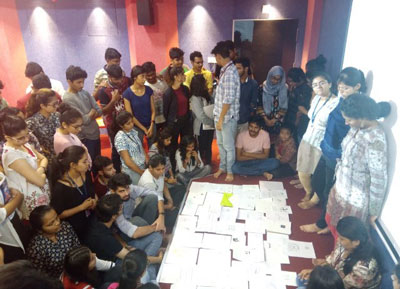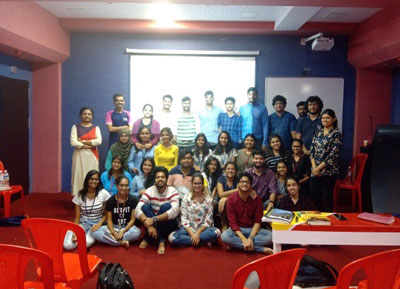| Subject | Design Dissertation studio |
| Session | 2019-20 |
| Year | 4th |
| Date | 12th- 13th July, 2019 |
| Semester | 7th |
| Faculty | Subject coordinator : Tejashree Lakras Workshop Conductor: Architect Mandar Dhuri |
Day 1 – 12th July, 2019
The workshop commenced with the interactive discussion on what is thesis, research, design and design dissertation and the differences between all these. It proceeded to the understanding of how practical approach but research based is effective for the successful operation of any design dissertation. This interaction was followed by an ice breaking exercise on “Making logo for your firm” where students explored and reflected their interests and personality with respect to Architecture profession in that logo.
The activity was followed by the discussion on “why I made this particular thing and how does it represent my thoughts”.
Later an interactive lecture on following two topics was taken
- How Many Building Systems Make The A Building Operational
In total 37 different types of building systems were put forward and discussed in individually in detail. These included variety ranging from Foundation System, Super-Structure, Facade System, Landscape systems, Building operations & maintenance system, Building waterproofing system and so on. - AN IDEA OF DESIGN APPROACHES
Under this section, an idea of variety of design approaches for different types of design dissertations was given. This was comprised of over 11 approaches like Sustainable / Experiential / Pragmatic-Practical, Cost Effective, Landscape, Modular and so on. An interactive session with students raising doubts was conducted on the above topics. - AN IDEA OF VARIOUS KINDS OF ARCHITECTURE
This session attempted to convey the overall and broader canvas of different kinds of architecture to students. This was including the list of over 20 kinds like Modernist, Destijl, Critical Regionalist, Brutalist, Art-Deco etc. and then a quick activity with students was conducted to know how they find their interested areas in above kinds. - CURRENT GLOBAL ISSUES FACED BY ARCHITECTURE
This topic aimed at knowing the level of knowledge that students have first and then through the discussion dislayed the list of current global issues in order to make students aware that the research question can revolve arount a certain issue and aim at finding apt design solution for the same. This list had in total 20 issues like, Hesitancy : (Re)-invent approach, Optimizing available resource, Durability of building material & low maintenance, Over-engineered technology. - EMERGENT TRENDS @ FUTURE OF ARCHITECTURE
This section played an important role in giving thae idea of design challenges and trends in architecture to students. An interactive discussion with students listed over 12 trends in emerging architecture namely Collaboration with system leaders, VR & Immersive Architecture, Big DATA & Smart Cities, BIM, Building Information Model, Parametric Architecture and so on. - CHALLENGES @ INDIAN CONTEXT
This topic covered the challenges with respect to emerging new architecture in India and its historical context. It addressed over 10 sub topics like Historical Dimension forms one axis, Variety of Land Form & Natural resource, varied environmental conditions forms second axis, Philosophical Tradition forms the third axis. - WHAT’S MY STRATEGIC PRACTICE ORIENTED VIEW
This session started with the informal exploration with a set of students for their different kinds of interests in architecture and letting them question as to how they can make this as a tool for developing innovative strategy of design in their thesis. Some of the questions which appeared collectively were, In which broad narrative of the future do i wish to see myself generating value / significance in coming times? What kind of a global / national issue or issues would i love to explore and try defining the nature of this value / significance? What kind of an Architecture & Design approach could be a possible way to optimize creating a value/significance for the issue i have identified myself with? In what ways have other architects handled this similar concern as mine? - DISSERTATION – FOR AN INDIVIDUAL
The session began with the small discussion for two different individuals (as examples) on how an individual can develop his own dissertation and can make it very unique in its approach for both research and design. - NEED @ DISCIPLINE
THis session attempted to address the individual’s capacity being the best tool for making research methods unique and proceeding further with the skill set for expansive and in depth inquiry in research. It also conveyed that the abstraction and value creation is equally important in order to have a suitable research question and making sustainable design and architectural opportunity as solution to it. - TOPIC SELECTION THE 3-PRONG APPROACH
This topic reflected the above elaborate discussions and defined briefly the process of topic selection with respect to following three broader cetegories- A) ORIGIN, B) MAIN PREMISE – HUMAN CENTRIC, C) MAIN PREMISE – ARCHITECTURE CENTRIC - KEYWORDS FOR SYNOPSIS
This small session oriented students to the importance of making synopsis and how it should be evolving throughout the semester. It gave the list of keywords like Need, desirability, Viability, workability. - GENERATE KEYWORDS FOR SMALLER QUESTIONS TO UNDERSTAND EACH ASPECT
- GENERATE KEYWORDS FOR A TENTATIVE FOCUS OF SYNTHESIS OF THE SMALLER QUESTIONS
The above two sessions dealt with the broader understanding of how a research question – smaller and larger are identified and how they direct or define the path of research for its conduction. This shall help in coming up with definite Architectural hypothesis and hence work on the methodology in correct way. - DEFINE AIM, OBJECTIVES & METHODOLOGY TO ANSWER SMALLER QUESTIONS & ADDRESS BIG QUESTION
This session gave a clear perspective of of how aim is nothing but the elaboration of points that indicate to explore and confirm hypothesis and objectives seve the smaller questions and purposes of research. - SIGNIFICANT THRESHOLDS OF DISSERTATION STAGE
The said topic talked about the concerns on and the detailed methodology for following heads, Architectural research, site studies and analysis and design research.
This helped students open up with the doubts on how an architectural design studio method is to be different from the design research and design dissertation.
The day concluded with an interactive session on “what are my interests and how I can translate them in architectural research”
DAY 2 – 13th July, 2019
The second and the last day of the workshop aimed at opening up students in more interactive discussions and understand their responses on the previous day’s sessions. It also conducted the individual discussions for resolving the thesis related doubts at personal level.
- ARCHITECTURAL & DESIGN RESEARCH
This session aimed at brain storming session on previous day’s session and reflection on what was discussed with individuals on their interests and their ways of interpreting thesis.
It also had a lecture on “different methodologies of conducting architectural research” namely, TECHNICAL RESEARCH, CONCEPTUALLY ORIENTED RESEARCH, PHILOSOPHICALLY ORIENTED RESEARCH. - ARGUMENT
This session helped students understand the significance of having an Argument in the architectural research and how it is different from debate but rely its dependency on healthy discussions. It included the parameters associated while framing an argument and further going ahead with architectural thesis methodology like, Identify the THESIS, Define the argument you wish to bring forth, Give Clarification of the argument, Identify Assumptions for stating the same, Bring forth the Rationale / Logic of the argument, Explore Consequences of rationale, assumptions, experiences, generalizations. - DOCUMENTARY SCREENING AND DISCUSSION
The day concluded with the screening of an architectural documentary and it was followed by the discussion on various perceptions of students. This also in a way opened up their minds about their own unique perspective and approaches that they had for design methodologies.


